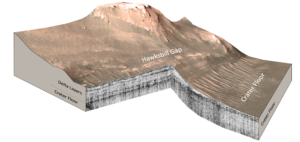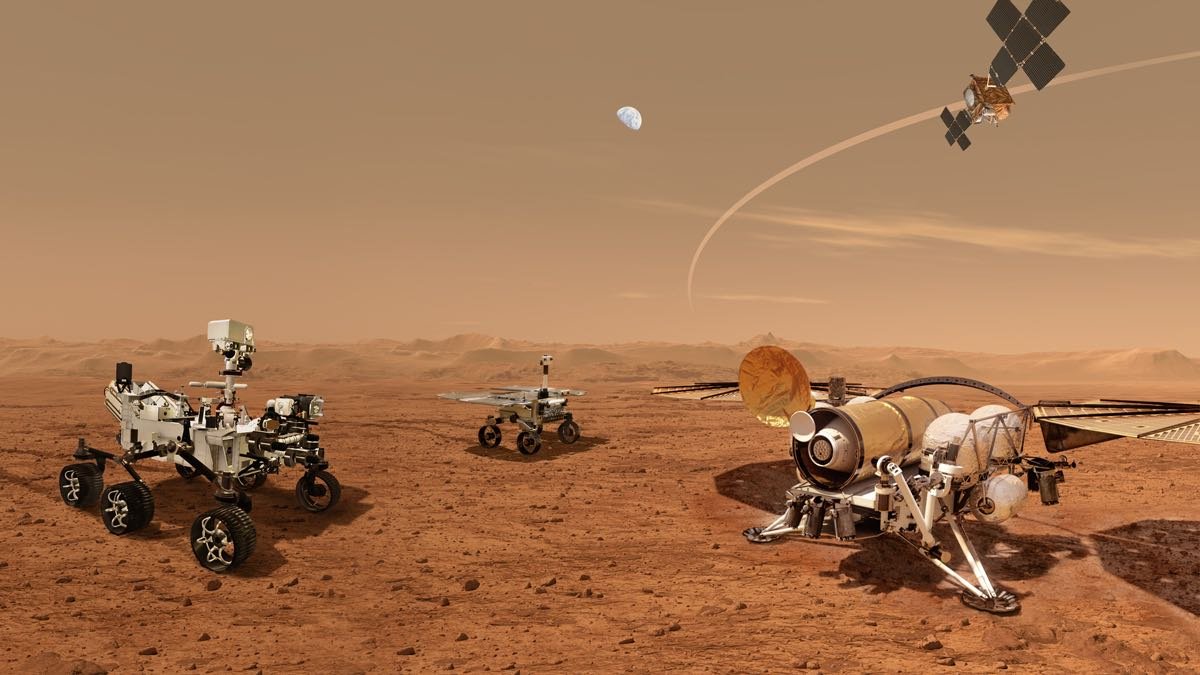A new analysis of subsurface deposit and erosion patterns beneath the dry lakebed in Mars’ Jezero crater indicates the process took place over eons, dramatically improving the chances that soil samples collected at the site by NASA’s Perseverance could contain signs of ancient life.
Although the exact timeline for a joint European Space Agency/NASA mission to retrieve Perseverance’s soil samples has not yet been set, the fact that the lake in Jezero crater had existed across numerous geological phases significantly increases the odds of finding signs of ancient life within those samples.
Researchers Have Long Suspected Deep Sedimentary Layers Lie Beneath Jezero
Over the last few decades, images captured by satellites orbiting Mars have long hinted at the idea of eroded subsurface layers in the region. However, researchers knew that up close analysis by Perseverance’s ground penetrating radar was the only way to confirm those suspicions.
“From orbit, we can see a bunch of different deposits, but we can’t tell for sure if what we’re seeing is their original state or if we’re seeing the conclusion of a long geological story,” said David Paige, a UCLA professor of Earth, planetary and space sciences and first author of the paper detailing the findings. “To tell how these things formed, we need to see below the surface.”
Fortunately, Perseverance’s mission planners included the Radar Imager for Mars’ Subsurface Experiment, or RIMFAX, as one of the seven instruments on board the rover. Like ground penetrating radar used on Earth, the RIFMAX fires radar waves directly into the Mars surface, then reads their reflections as they bounce off different sedimentary layers.
Ground Penetrating Radar Confirms Satellite Imagery
To scan the floor of the river delta that once fed the Jezero crater, Perseverance used RIMFAX to fire radar pulses into the ground every 10 centimeters. When those pulses are reflected from as deep as 20 meters below the surface, the instrument captures that data. Given the prolonged usage of this system on Earth, scientists have figured out how to read the structure and composition of subsurface layers from those reflections.
“Some geologists say that the ability of radar to see under the surface is kind of like cheating,” said Paige, who is RIMFAX’s deputy principal investigator.
The process occurred between May and December of 2021, offering researchers a chance to collect data from a wide area within the delta. As the researchers reported in the latest edition of Science Advances, the radar revealed compelling evidence that the ancient lake in Jezero crater had made soil deposits and eroded over eons.


“The periods of deposition and erosion took place over eons of environmental changes, the radar indicates, confirming that inferences about the Jezero crater’s geologic history based on Mars images obtained from space are accurate,” the UCLA and the University of Oslo researchers explain,
Findings Increase Odds for Signs of Ancient Life in Jezero Soil Samples
Although Perseverance has completed numerous missions and made countless significant findings about the red planet since its landing in February of 2021, few tasks undertaken by the SUV-sized rover have tantalized researchers and the public as much as the soil samples it collected and stored away for an eventual return to Earth. Not only did the original mission planners choose to study Jezero in hopes that there had been an ancient lake at the site, but the exact areas the vehicle has studied within the 30-mile wide crater were selected as the likeliest places to find signs of ancient life.
Furthermore, they chose specific sites within those study locations to select samples with the highest chances of life. So, the fact that the rover’s findings agree with the satellite imagery used by mission planners and confirm that they had indeed been chosen correctly should only increase the motivation to fund the sample return mission.
“The changes we see preserved in the rock record are driven by large-scale changes in the Martian environment,” Paige said of the timescale revealed by the findings. “It’s cool that we can see so much evidence of change in such a small geographic area, which allows us [to] extend our findings to the scale of the entire crater.”
Ultimately, the sooner those samples can be returned to Earth, the sooner researchers can use the most advanced tools and techniques to analyze them. Given these latest findings, researchers may end up finding signs of ancient extraterrestrial life in the exact place they hoped to discover them.
“If life ever existed on Mars, the Perseverance rover’s verification of lake sediments at the base of the Jezero crater reinforces the hope that traces might be found in the crater,” the researchers explain.
Christopher Plain is a Science Fiction and Fantasy novelist and Head Science Writer at The Debrief. Follow and connect with him on X, learn about his books at plainfiction.com, or email him directly at christopher@thedebrief.org.

